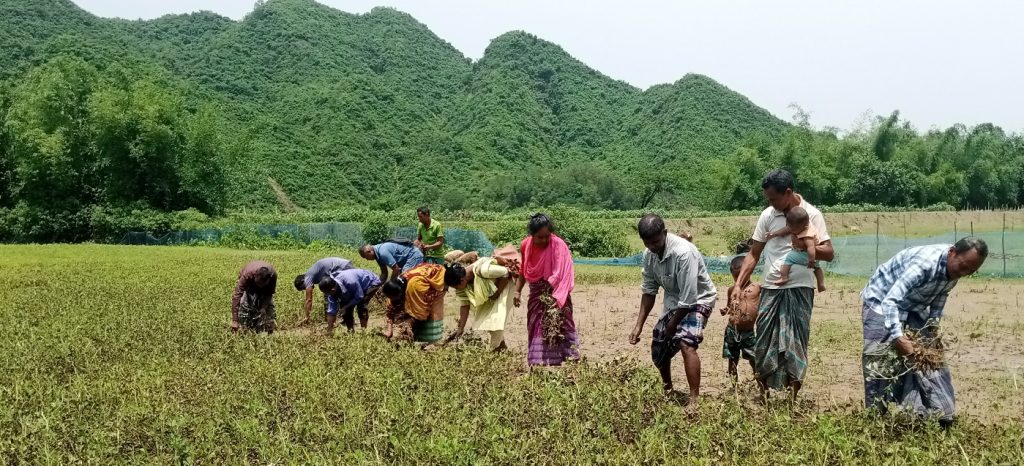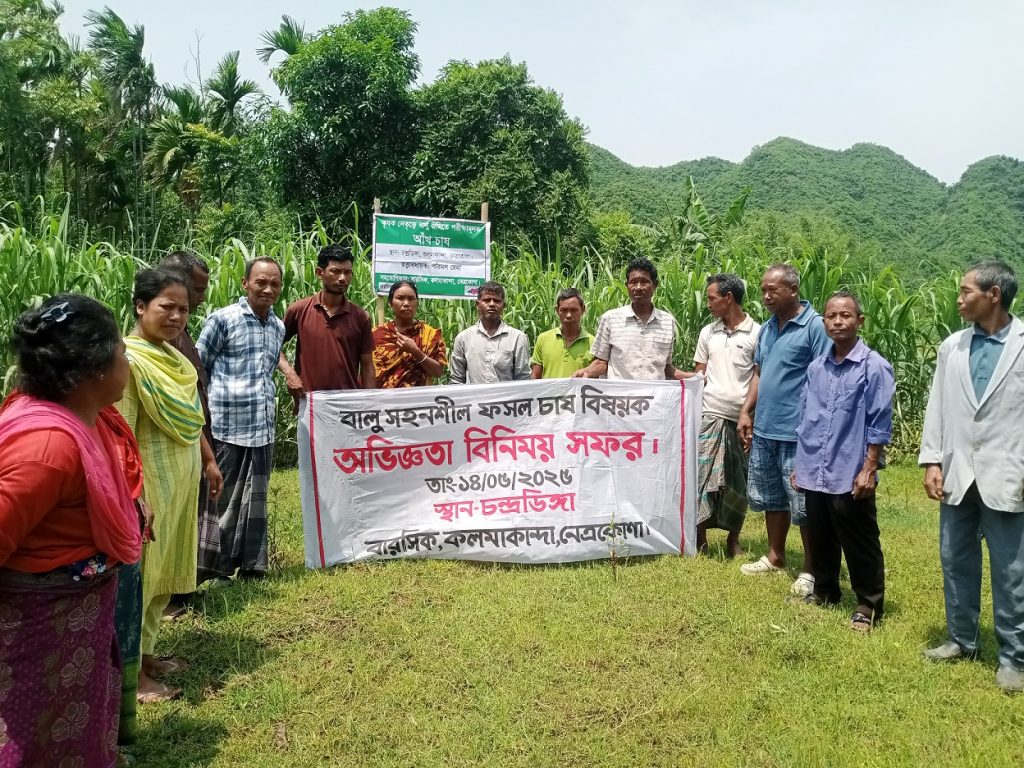By Gunjan Rema from Kalmakanda Netrakona
BARCIK recently organized an experience-sharing visit on “Cultivation of Crops suitable in sandy lands” in Chandradhinga village, a remote border area of Kalmakanda upazila with the objective to enhance farmers’ adaptive capacity to climate change and to promote the cultivation of suitable crops on sandy lands.
A total of 15 farmers, both men and women, from four villages participated in the visit. They observed successful practices such as peanut and sugarcane cultivation, ginger farming in sacks, and vermicomposting in Chandradhinga. Through discussions and field observations, they learned valuable insights about farming on sandy soils, which are expected to enhance their agricultural skills.

Local farmer Parimal Rema while sharing his experience, said, “These lands used to be barren. But now, following BARCIK’s guidance, I’m cultivating crops which are suitable in sandy lands at low cost. The yields are good, and I get fair prices in the market. This year, I cultivated maize on 33 decimals of land and have been benefited financially. “
Gunjan Rema, BARCIK’s Kalmakanda Upazila Coordinator said, “This initiative aims to demonstrate how people in sandy areas can adapt to climate change by utilizing their own knowledge, resources, and experience to ensure food security and income.”
At the end of the visit, participants expressed optimism about the potential for agriculture on sandy lands. Many had previously believed these lands to be uncultivable. However, seeing the successful cultivation of peanuts, maize, and sugarcane in Chandradhinga shifted their perspectives. They realized that with proper technology and advice, even sandy lands can become productive.
The successful farmers of Chandradhinga felt confident and proud to showcase their work. Participants also learned which crops are suitable for sandy soil, how to farm with minimal water and organic methods, and how intercropping can increase income.

Nahajan Hajong, one of the visiting farmers, said, “After harvesting Aman paddy, many lands in my area remain fallow. I was amazed to see peanut, maize, and sugarcane cultivation on sandy lands during today’s visit. If such crops can grow well here, I plan to try them on the fallow lands near my home, which can also provide additional income.”
It is worth mentioning that BARCIK has been working for many years to ensure active participation of farmers in climate adaptation processes through sustainable agriculture, environmental conservation, and the use of indigenous knowledge.

